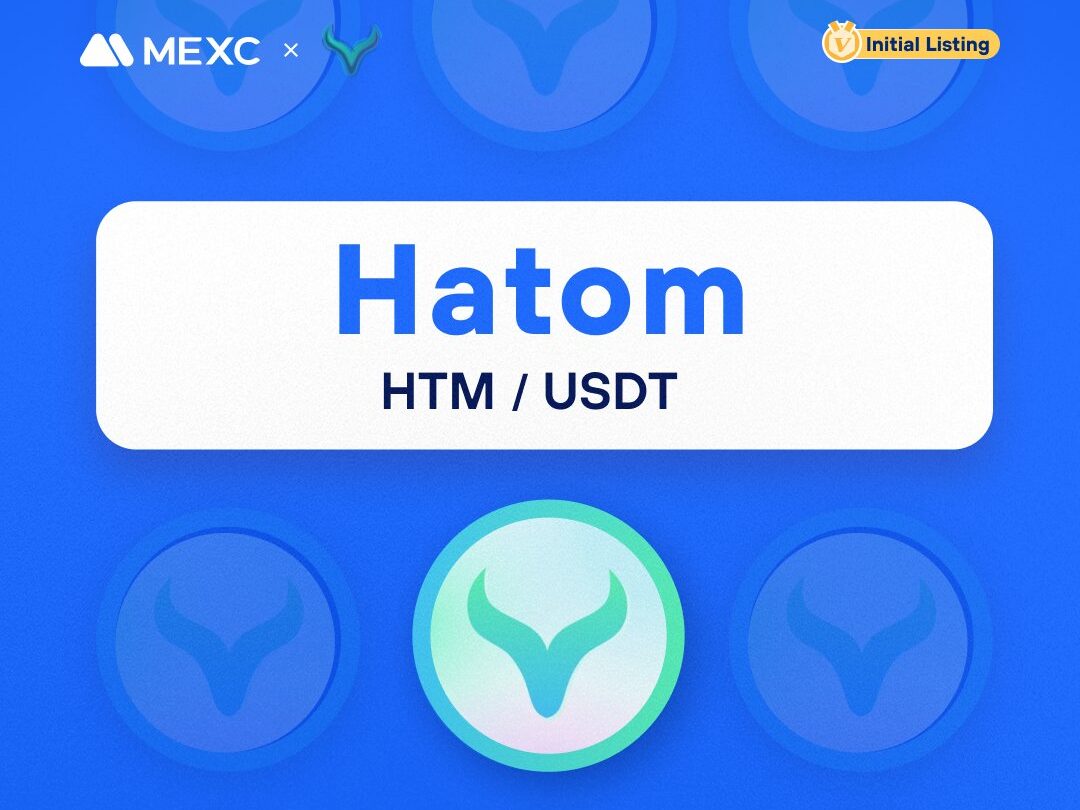Flux (FLUX/USDT – Trade it Here) is a suite of blockchain solutions that enable information processing with a cohesive working system similar to the AWS system. The Flux Ecosystem Token, which works in sync with the FluxOS cloud system, has a blockchain-compatible self-storage application. In this article, we will discuss everything you need to know about Flux plus a guide on how to buy Flux tokens. Basic information for their token is available on the MEXC Digital asset introduction page.

Project Ecosystem
The Flux network is the result of a combination of protocols and parties within the Flux ecosystem working together. As a pioneering Web3 project creating the foundations of a truly decentralized internet, the Flux ecosystem is host to FluxNodes and miners using novel algorithms. In addition, FluxOS is the computational network being run by the FluxNodes and miners, offering an easy-to-use development playground for developers. Moreover, the Flux network wallet and multi-utility platform, ZelCore, is one of the key features of the ecosystem.
FluxOS
At the heart of the Flux network is FluxOS – a distributed chain-agnostic computational system for developers to deploy decentralized applications (dApps). As a fully open-source protocol, FluxOS reassures developers that their dApps will be live and operational at all times. This is because a global network of FluxNodes, each holding a replica of an application, is responsible for powering the network and applications. As such, if one or multiple nodes went offline for some reason, activity and operations on dApps would be unaffected.
FluxOS is truly interoperable across multiple blockchains, enabling developers to “run any app on any chain on FluxOS”. Moreover, by using “dockerization” for deploying applications, developers don’t need to learn any new programming languages. Also, developers can docker centralized applications to seamlessly transition them onto the decentralized Web3 internet. Using FluxOS, developers can design, deploy, and manage globally decentralized applications (dApps) via an API (application programming interface) and UI (user interface). FluxOS takes care of the backend blockchain requirements, allowing developers to focus on the user-centric frontend aspects of their dApps.
Operating with infrastructure using the MEVN stack (MongoDB, Express.js, VueJS, Node.js), the FluxOS design uses the latest open-source JavaScript software stack. In turn, FluxOS boasts a wide array of use cases. This includes blockchain as a service (BaaS) such as hosting applications or nodes. Also, FluxOS allows developers to deploy oracles to aggregate decentralized data sets. Additionally, FluxOS enables developers to deploy blockchain games and web servers with zero friction.
The FluxOS platform allows network participants the opportunity to interact with global applications, vote in the Flux network decentralized autonomous organization (DAO), and view resources and rewards.
FluxNodes
FluxNodes are responsible for the upkeep and maintenance of the FluxOS network. As an open-source project, anyone has the opportunity to run a FluxNode. However, running a FluxNode does require quality “enterprise-grade hardware” with a high uptime obligation. Also, as part of the incentivization of securing the network, there are collateral requirements to becoming a FluxNode. This varies depending on the type of node one wishes to operate. Overall, this generates a global network of like-minded Flux enthusiasts providing computational resources to the Flux network using novel security mechanisms.
Although there are three tiers of FluxNodes, they all operate using Flux’s innovative proof-of-work (PoW) hashing algorithm “FluxHash” (“ZELHASH Equihash 125_4”). FluxHash is a blend of other “Equihash algorithms from ZCash(200,9) and ZHash(144,5)”. The result is an application-specific integrated circuit (ASIC)-resistant mechanism. This means that Flux is more appealing to graphics processing unit (GPU) miners, facilitating a more equitable mining pool with no risk to decentralization.
FLUX asset holders can choose to run one of three different types of FluxNodes, each with different requirements and FLUX token rewards. These are Cumulus, Nimbus, and Stratus.
Cumulus has the least requirements, with 10,000 FLUX as collateral with a minimum of 2 vCore, 4 GB RAM, 50 GB HDD/SSD hardware requirements. In return, Cumulus FluxNodes receive 7.5% (or 5.625 FLUX) of the total FLUX block rewards.
Nimbus FluxNodes require higher collateral and further hardware demands but receive a higher deterministic block reward of 12.5% (or 9.375 FLUX tokens). Stratus FluxNodes have even higher requirements. Users must collateralize a minimum of 100,000 FLUX tokens alongside operating hardware with at least 8 vCore and 32 GB RAM. In return, Stratus FluxNodes receive 30% of the FLUX block rewards or 22.5 FLUX tokens per block.
GPU Miners
The remaining 50% of the block rewards (37.5 FLUX tokens) go to the Flux GPU miners. Flux miners are responsible for processing and validating transactions throughout the Flux ecosystem. By doing so, Flux miners provide valuable computational resources to the Flux network.
Flux miners can choose to participate in a variety of different mining pools. This includes native Flux blockchain community pools alongside mining pools created by supportive third-party teams. Each mining pool has different restrictions varying from the type of FluxNode (e.g., Cumulus, Nimbus, and Stratus) to a node’s geographic location. The currently available mining pools include the Flux Community Pool, Solo Pool, Zergpool, NLPool, etc.
ZelCore
ZelCore is one of the fundamental and most active decentralized applications (dApps) operating on FluxOS. Moreover, as a multi-utility blockchain-agnostic platform and crypto wallet, ZelCore allows users to store more than 380 different cryptocurrency assets. As a free-to-use platform, users can access various built-in “quick-swap exchanges” with the ability to buy crypto with a regular debit card! Also, as the Flux network’s designated multi-asset portfolio management platform, ZelCore employs a decentralized two-factor authentication process, or “d2FA”.
Furthermore, holders of the FLUX token can pay for premium features available with ZelCore+. ZelCore+ offers a tiered monthly subscription service to gain access to exclusive features, including portfolio tracking, additional wallets for each asset, and access to API integrations of major crypto exchanges such as Binance and Kraken. In short, this means users can access and trade on these exchanges through the ZelCore+ app. Additionally, ZelCore+ features an aggregation feed of relevant industry and project news. Plus, users can sync their own exchange accounts and “import private keys to ZelCore lite wallets”.
The ZelCore platform offers a gateway to multiple useful applications, including the popular Fusion app. The Fusion app enables each native FLUX coin and the parallel FLUX token to “frictionlessly” transition between the Flux blockchain and other popular chains. Furthermore, the Fusion app facilitates airdrops of the FLUX token for the distribution of parallel assets and FluxNode rewards. ZelCore is a decentralized application (dApp) available on both mobile and desktop devices. This includes all iOS, macOS, Android, Linux, and Windows devices.
Flux Network – XDAO
Enabling true decentralization of the Flux network and a decentralized internet, governance of the project lies with members of the Flux governance (XDAO) decentralized autonomous organization (DAO). To become a participant of XDAO, members must hold a certain amount of FLUX tokens. Users can access the Flux governance XDAO via the main “runonflux.io” website. Here, users can view all of the open, passed, and rejected update proposals to the Flux network. Information such as the submission date, end date, number of votes required, and a breakdown of the result of the votes (i.e., Yes: 23,880/No: 780) is publicly available.
Who created Flux?
There are three persons responsible for the birth of Flux. Daniel Keller from the USA is a Co-Founder and Chief Strategy Officer of Flux. This technologically astute leader brings 25+ years of broad experience in technology infrastructure, operations, and large-scale project leadership, and the ability to bridge effective communication across all organizations. Tadeas Kmenta is the second Co-Founder, who has been developing the project since its inception and is currently working in the position of Chief Innovations Officer focusing on new and emerging technology developed on Flux and FluxOS. The third Co-Founder of Flux is Parker Honeyman, Chief Operations Officer, and engineer who brings technical know-how and proven development processes to the project.
Tokenomics with recent price & performance of Flux Token (FLUX)
The tokenomics of FLUX :
- Name: FLUX Token.
- Ticker: FLUX.
- Token standard: ERC-20.
- Token type: Utility.
- Max supply: 440,000,000 FLUX.
- Circulating Supply: 279,215,501.65 FLUX.
FLUX reached the highest price (ATH) of 2.94 USDT on January 3, 2022. The lowest price since the date of ATH was 0.41 USDT on June 19, 2022. The 30 days performance sees the highest price at 0.96 USDT on September 21, 2022. The lowest was at 0.63 on October 13, 2022. Currently, they are performing at 0.7065 USDT with a market cap of $197,698,114 & fully diluted market cap of $312,205,132.
How to buy FLUX Token (FLUX)?
You can buy FLUX Fan Token (FLUX) on MEXC by following the steps:
- Log in to your MEXC account and click [Trade]. Click on [Spot].
- Search “FLUX” using the search bar to see the available trading pairs. Take FLUX/USDT as an example.
- Scroll down and go to the [Spot] box. Enter the amount of FLUX you want to buy. You can choose from opening a Limit order, a Market order, or a Stop-limit order. Take Market order as an example. Click [Buy FLUX] to confirm your order. You will find the purchased FLUX in your Spot Wallet.
Stay Tuned to the Crypto Market!
Check out our listings in the Innovation and Assessment zones as well as the major tokens in the Main Zone . We have more amazing projects to come! What’s more, MEXC lists moonshots and offers access to trade major cryptocurrencies. Visit the Hot Projects section as well to uncover more featured popular tokens. Lastly, feel free to visit MEXC Academy to learn more about cryptocurrency in general.
Join MEXC and Get up to $10,000 Bonus!
Sign Up


